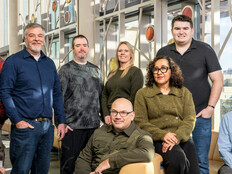The Modern Campus Technology Checklist
Higher education campuses will soon be full of students again, and many will feature technology upgrades installed during the summer.
These upgrades grow more and more vital each year. As universities fight over top students, prospective attendees will look at the amenities a school offers. While technology may not be a student’s top differentiator, it may sway the decision if other factors, such as a school’s cost and reputation, are even.
To make sure higher education institutions have a modern campus, here are five technologies that every college or university needs to be competitive with other top institutions.
Wireless Networks
Wireless devices are flooding campuses, making high-performing Wi-Fi a must-have for any school. Using network surveys to determine which classrooms and common areas need additional access points, or upgrades to the equipment already in place, is a solid step in improving infrastructure. When investing in new gear, opt for access points that support the 802.11ac Wave 2 wireless standard, which enables data rates of up to 6.9 gigabits per second.
This standard better supports multiple devices and bandwidth-intensive applications, including video transmissions. Also consider controllerless Wi-Fi options, which simplify management by automatically applying configuration and authentication policies to access points across the network.
Cloud Computing
Cloud-based solutions for Software as a Service and Infrastructure as a Service continue to give CIOs greater options for delivering new services to modern classrooms at predictable prices. Cloud services relieve the burden on resource-constrained IT departments, which otherwise would be responsible for patching, maintaining, and troubleshooting on-premises applications and infrastructures.
Another plus: The on-demand advantage of cloud solutions means schools can quickly scale up resources for temporary spikes, such as increased demand arising from online testing and online registration. Some public-cloud platforms now offer services tailored for education, including tools to help students develop websites and apps via the cloud.
Interactive whiteboards
Multitouch whiteboards enable students and instructors to work through math problems, discuss diagrams or illustrate virtually any concept in front of the entire class. At the end of class, students can download screen content to their computers for later review. Before investing, first .consider educational goals and then choose the best size
Large-format whiteboards range from 102 to 135 inches in width and can simultaneously support more than a dozen touch point and multiple pens. Leading options also include software to help instructors customize demonstrations for specific lessons. Other applications let students capture photos outside of class using mobile devices and display those images on the whiteboards.
Video
Video enriches educational opportunities in any learning environment, including the ability to capture lectures for on-demand viewing at any time of day. Administrators turn to video for tighter campus security, staying close to alumni, and to support funding campaigns.
Top-of-the line resolution for most commercial camcorders today is 4K and Ultra HD, also known as UHD. Although higher quality than standard HD, these cameras are pricey, with pro-am models listing around $1,000 and up, and professional versions around $2,000. The good news? These newer models create room for vendors to lower prices for standard HD cameras.
New IP cameras for safety and surveillance can leverage the cloud for storage and connect to other networked devices, including campus access-control systems, for enhanced security.
Digital Signage
Digital signage plays an important role in both day-to-day communication and emergencies, two instances requiring information to be shared quickly and accurately.
Look for signage solutions that easily connect to campus networks and enable central control messaging, whether that’s general news and information or emergency notifications. Some newer options send and receive information, so schools can determine how many people pass each particular sign to determine the optimal locations for messaging.









